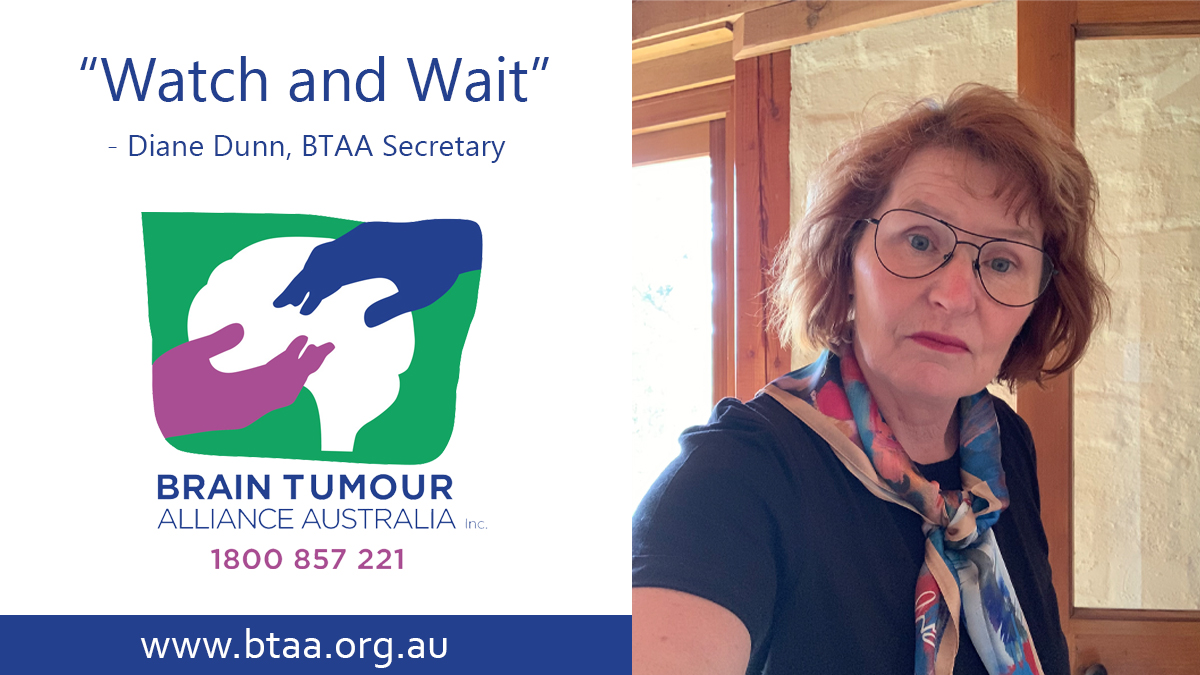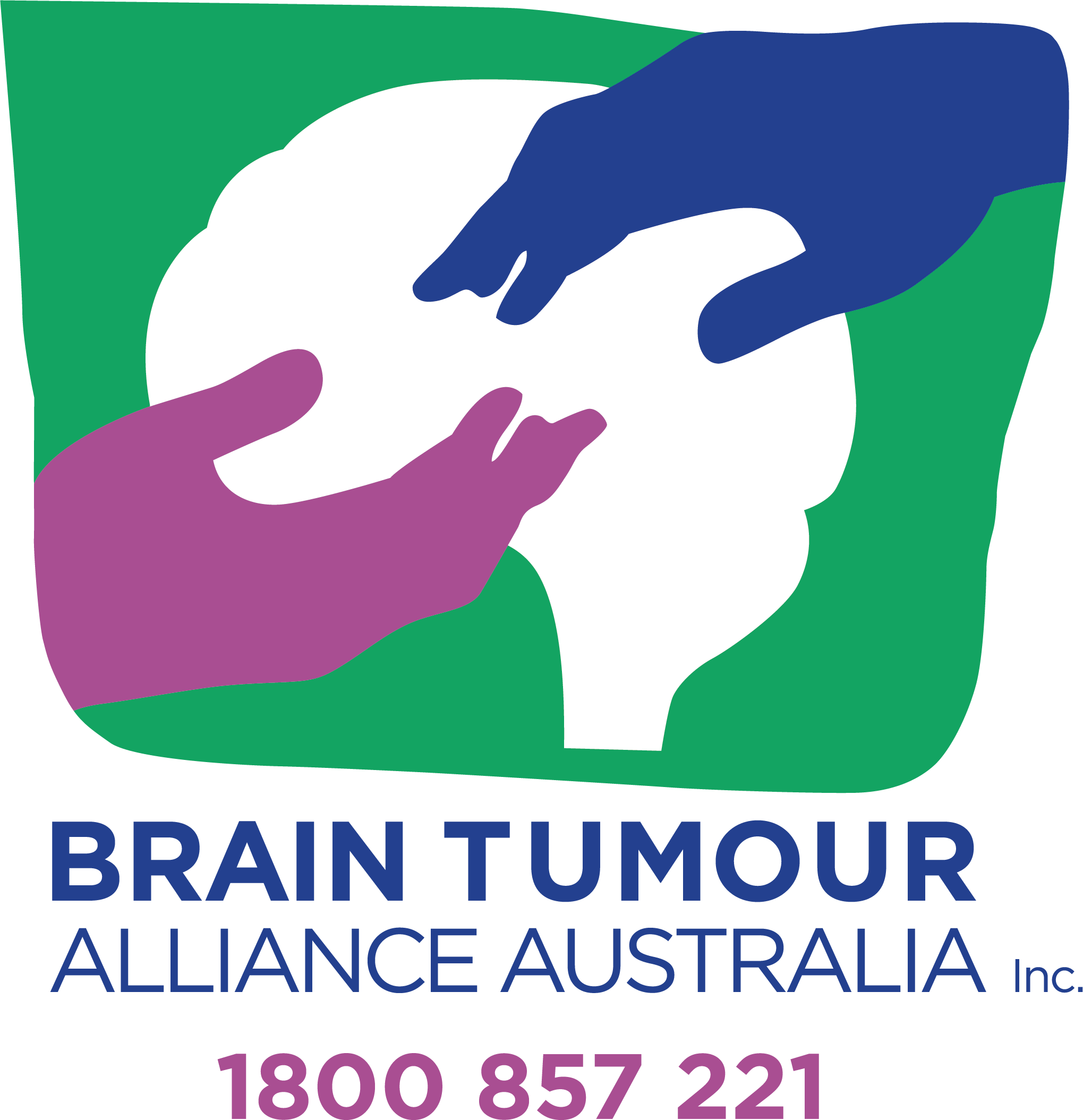

I have entered a phase on my brain tumour “journey” called 'Watch and Wait'. Sounds simple? Not when you dig deeper into both the physicality of repeated scans, and the emotional distress it provokes routinely, like clockwork every three months.
Watch and Wait means - let's watch it (the inoperable tumour located in the parietal lobe of my brain) - and observe when it progresses. Note I say ‘when’- not ‘if’, for that is the crux of the Watch and Wait process. Three monthly MRIs to check if there have been any changes in the tumour indicative of progression. So every three months I attend the MRI department of my local hospital, have an IV inserted for contrast fluid to be injected - gadolinium (itself somewhat controversial) - and partake in a 30 - 40 minute scan. In my case, the results of this scan remain unknown to me for some 5 days until I see my oncologist. So, whilst the lead-up creates tension “scanxiety”, the physicality of the actual scan relieves some of that - a sense of achievement of having come through the process again. But frustration and tension build again as I wait to find out the result.
The lead-up to the scan is a mildly anxious period. The first month immediately after is lived fairly normally - with the next scan seeming such a long time away. By the second month, my thoughts begin to turn towards... “it’s NEXT month”. By month three I begin counting down the days to scan day - and intrusive and fraught thoughts are hard to contain. The “what if’s” begin - what if it shows progression - what treatment will I be offered, will I require further brain surgery, will I be offered a trial, are there new treatments waiting in the wings for people like me who have completed what is referred to as 'standard of care'. Comical thoughts start too - if I require surgery have I suitable pyjamas, should I make sure I have shaved my legs, should I cut my hair off in advance this time, but more often I am overcome by sadness and fear. Will I only be offered palliative care? What if the brain surgery leaves me disabled and requiring care? How will I cope with the pain and suffering I am putting my family through? Should I consider radical unconventional treatment offered by some at a premium cost - and leave my family with additional debt after my still inevitable demise?? For this is the reality of an inoperable and incurable brain tumour - I will not survive it. The question is, how long have I remaining? The aim is to live the remaining time as positively as possible.
Not knowing when you might die is a dilemma of course with which every human being lives. But rest assured, knowing you are living with a life-limiting illness for which there is no cure is markedly different to knowing your life will inevitably end - one way or the other at some point in time. Living whilst dying creates huge uncertainty. Uncertainty is very topical in pandemic times - many people not previously aware of the stress of uncertainty have had a small taste of its impacts. Questions posed by those affected by lockdowns and Covid 19 - will I work again, can I afford to spend money, will I remain healthy after contracting it, how will my family cope, will I require hospitalisation, who will look after me, my family, my pets - if something happens to me - are constant companions of those living with a terminal illness. You likely live with the hope that COVID-19 will pass and life will go back to normal for you. I do not have that luxury. Moreover, I am reminded of it every 3 months. Seasons pass and I wonder if I will see another Spring, Autumn - will I see seasonal cherries again? Should I plant anything that takes years to mature? My future might have included travel in retirement, to see offspring marry/partner/have children or contained vague aspirations to build again, - but undertaking a project which might never see fruition seems careless and foolhardy.
My new normal is called survivorship. It is the period in which you are living after a life-changing diagnosis. During this time the values prized by society and held up as markers of a worthwhile life, are taken away or altered irrevocably: productivity; social life; a sense of control; ability to plan. Furthermore, the longer survivorship lasts two strange outcomes accompany your longevity: each stable scan result is met with immediate celebration - then the crushing emotional distress sets in with the realisation that each stable scan gets you closer to the scan which won’t be stable - it’s a simple matter of maths.
Secondly the longer your survivorship lasts you experience the more gradual the falling away of support - people visit less often, overlook your scan/ oncology appointments, stop asking meaningful and heartfelt questions about your health and your ability to cope. This is completely understandable but that makes it no less difficult to live with. People “get on with their own lives” - it is a hard slog to support someone for an extended period of time - it's a marathon, not a sprint. Not everyone has a marathon of support in them.
Of course, this falling away of support is bolstered by my continuation of “looking good” and stable scans which appear to contradict the existence of the underlying disease.
Invisible illnesses are fraught with these injustices - for brain tumour patients like me, you don’t see the headaches, the noise sensitivity, the fatigue, the confusion with words and meaning, the unsteadiness of gait, the constant state of worry over unusual sensations - the fear of sudden seizures.
Dianne Dunn
BTAA Secretary
“In November 2016 I received a diagnosis of Grade 2 oligodendroglioma in my right parietal lobe and was advised it was inoperable. In common with most brain tumour patients, I was completely blindsided by this unexpected diagnosis. Prior to this, I was a very fit 54- year-old - vegetarian since 18, a non-smoker, and a non-drinker. As a result of my diagnosis, I lost my small business - I was the sole owner/operator of a boutique bakery and, as is often the case for self-employed people like myself, I didn’t have leave entitlements to fall back on. I have a wonderfully supportive husband Philip, and three adult children. I am still an avid baker and live on a blissful bushland property in the foothills of the Brisbane Ranges in Victoria with two adored dogs.”
If you would like to share your story with us, please get in touch, we would love to hear from you!
To return to the BTAA homepage, please click here.

